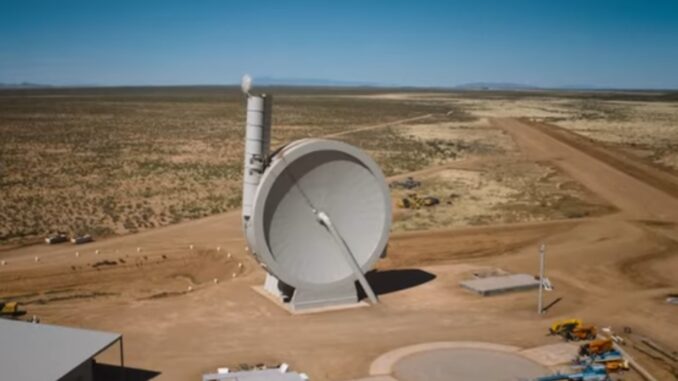
“Spin me up, Scotty”: this exact phrase was never uttered by James T. Kirk, nor will it ever be no matter which parallel universe the Star Trek franchise explores. The reason why will soon become apparent.
SpinLaunch, a Long Beach, California-based company, is making a reality out of a science fiction technology. Or, to put it another way, they’re turning a decades old idea into a real, working technology that offers an advantage over conventional means. Before describing their solution, let’s briefly discuss the problem they’re trying to solve.
Modern conventional rockets, designed to put satellites and spacecraft into orbit, are multi-stage vehicles. Most of the mass of the rocket is in the first stage and consists primarily of fuel needed to overcome gravity in the first few minutes after launch, because the force of gravity is greatest at Earth’s surface. The higher the rocket goes, the less gravitational pull exerted on the vehicle. When the fuel in the first stage is spent, that stage falls away while the second stage begins its burn. There is far less fuel in the second stage: it’s not needed because the pull of gravity is weaker at the higher altitude. The bottom line is, most of the expense of the rocket is in the first stage. That’s a problem if you’re the one who has to pay for it. Wouldn’t it be great if we could just eliminate the first stage? The cost of such a rocket and therefore the cost of launching satellites and spacecraft could be cut to a fraction of the expense of conventional launches. This would be a huge advantage for any competitor in the burgeoning space launch industry.
The idea SpinLaunch is developing employs a giant centrifuge with a rotating arm inside. The launch vehicle, equivalent to a rocket’s upper stage, is attached to the end of the arm. All the air inside the centrifuge is pumped out, creating a vaccum in order to eliminate air resistance and friction on the launch vehicle. Electricity is used to spin the launch vehicle up to mach speeds (multiple times the speed of sound) before releasing it at the precise millisecond, sending it up along a predetermined flight path. It’s been compared to a trebuchet or a sling (just like the one David used against Goliath – a fitting analogy that bigger launch companies should not ignore).
In SpinLaunch’s design, the centrifuge and spin arm take the place of a rocket’s first stage, and electricity takes the place of rocket fuel. The system can be used over and over again, with several launches every day, each launch costing a small fraction of a conventional rocket. The company made its first flight test using a suborbital centrifuge accelerator on October 22, 2021, launching a 10 foot dummy projectile tens of thousands of feet above Spaceport America in New Mexico. This first test only utilized twenty percent of the system’s total power. Once this suborbital system is perfected, SpinLaunch plans to build a much larger orbital launcher, which they plan to locate on a seacoast somewhere yet to be determined. The deep pockets funding SpinLaunch include “Kleiner Perkins, Google Ventures, Airbus Ventures, Catapult Ventures, Lauder Partners, John Doerr and Byers Family.”
There is one downside, however. Everyone who’s ever seen the original Star Trek TV series remembers Kirk using his communicator to contact Mr. Scott, chief engineer aboard the starship Enterprise in orbit above planet du jour. Typically, Kirk would say, “Beam me up, Scotty”, to be transported, atom by atom, from the planet surface back up to his ship. While that sounds iffy in regards to living through having one’s atoms ripped apart only to be hastily slapped back together again milliseconds later, one has zero chance of living through the launch of a large centrifuge accelerator, due to crushing G-forces. In summary, SpinLaunch or any similar technology will always be for inanimate objects such as cargo only, never for biologicals like us mortals.
“Can Spinlaunch Throw Rockets Into Space?” (11:08)
